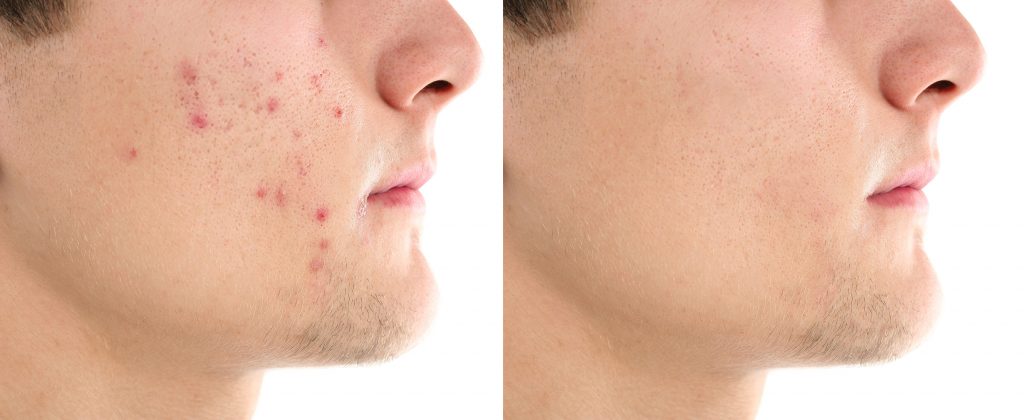
Some acne does not respond to topical or oral treatments. Patients are finding relief with red and blue light therapy. Most patients experience about a 75% reduction in lesions, and the treatments can take place at the doctor’s office or at home.
The FDA approved blue light therapy for acne in 2002. Blue light kills the bacteria associated with acne, and does not damage the surrounding tissue. Red light has an anti-inflammatory effect and stimulates healing.
ClearLight is the most popular in-office treatment system. Most patients using ClearLight undergo two 15-minute sessions a week, and see result in about four weeks. Treatment at home takes longer, but costs a lot less. Verilux HappySkin, AcneLamp, and other home use products typically require daily 15-minute sessions for about 12 weeks. They come in tabletop and handheld models, and run about one-third of the price of in-office treatments.
Acne occurs when bacteria infects clogged pores. Pores can be clogged by environmental factors, cosmetics and other products, or by a plug of sebum. Hyperactive sebum glands are a major contributor to acne. Teenage acne is most often the result of hormones triggering excessive sebum production. Adult acne is often caused by hormonal activity during the menstrual cycle and breakouts can be triggered by stress. Diet and medications can contribute to acne by causing a buildup of toxins in the body that are eliminated through the skin.
Red and blue light therapy is gentle and does not have the side effects of most acne treatments. Unlike UV light, which can also improve acne, red and blue wavelengths are safe and do not pose a risk of skin cancer. Topical treatments often have painful side effects, burning and irritating skin and often increasing the risk of sunburn. Oral treatments can also increase the risk of sunburn, cause yeast infections, and for some cause digestive problems. Red and blue light therapy has none of these side effects.
Some topical treatments can be used in conjunction with light therapy to increase effectiveness. The results can be long-term, permanently resolving hyperactive sebaceous glands.
The number of patients involved in trials with blue light has been small, but the results have been positive and are very promising. Skeptics believe that there is not yet proof that the therapy works and that the positive results may be due to the placebo effect. However, light therapy is safe and possibly the only therapy without side effects. For patients who cannot use other treatments or who do not respond to other treatments, it is certainly worth exploring.
If you suffer from persistent acne, talk to your skin care specialist about blue and red light therapy today.
Read more articles about skin care.




